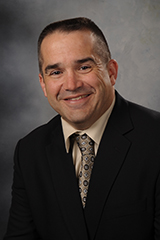February 27, 2018
On "Grass Roots" and "Top Down"

During the listening sessions, I often heard the term “grass roots.” I also used the term, but what does it really mean for our Extension partnerships and system? Does it mean, as a few seemed to indicate, that strategic, operational, and programmatic ideas can or should only be brought forward by local units? Does it mean that ideas shouldn’t come from the state-level, or, for lack of a better term, top down?
The Smith-Lever Act of 1914 established our federal, state and local Cooperative Extension System partnership. Each state was allowed and still are allowed to choose how to implement their system. Many Cooperative Extension systems were set up or evolved to be state level oriented, which is often referred to as a top down system.
What about Kansas? Our state’s Extension Council Law was set up and evolved to ensure that local unit (AKA grass roots) input and feedback would be generated and heard, but it doesn’t say that strategic, operational, and programmatic ideas can only come from the local unit partners. It was not set up to say that ideas can only come from the state level partner. It was not set up to say that ideas can only come from the federal level partner. Our K-State Research and Extension system was set up a cooperative partnership that brings good ideas forward, no matter where those ideas originated from. Why would one want to limit where ideas come from? A good idea is a good idea! That is why we have the following in place:
• Local unit Program Development Committees and Extension Boards;
• Local unit Extension Boards and our Regional Directors working together regarding local Extension administration issues;
• Program Focus Teams bringing Extension professionals together to discuss local, state and federal ideas regarding programming needs;
• State Extension Advisory Council providing guidance to Extension Administration;
• Partnership Meetings (and the more frequently held successor to Partnership Meetings) in order for local units and Extension Administration to share ideas and perspectives;
• Annual Conference to allow our Extension professionals to share ideas; and,
• More informal programs like the Listening Sessions, our Difference Makers Facebook page, and local unit visits that help further engrain the importance of working and discussing things together.
Is the K-State Research and Extension system effective? Yes. We are great at educating the public. We are also great at how we collaborate as Extension partners. One only needs to talk to Extension professionals and volunteers from other systems to see that we are extremely effective at gathering input, feedback and jointly providing the management and administration needed to maintain and improve our system.
Do all of our partners in the system always agree? No. Is our system perfect? No. The answers to the latter questions show we need to continue to work together to improve our system. We need to be open to ideas that come from all parts and even outside of our system. When we hear a new idea we do not like, we shouldn’t cross our arms, lean back and say “No way! Stop being so _______!” You can fill in “top down” or “grass roots” in that blank, whichever is appropriate from your perspective.
Instead, we should realize that we are cooperating partners with a very important mission. We are here to provide the research, education and facilitation necessary to help people improve in practical matters that will positively impact their lives, livelihoods, and communities. To do this even better, we need to put our heads, hearts and perspectives together, build upon our common ground, and work through where our opinions differ. We need to strive to work together and make K-State Research and Extension even better for the people of Kansas!
Are we grass roots or top down oriented? I vote for neither and propose the following: we are or will become a system of cooperating partners working together to help the people of Kansas improve their lives, livelihoods and communities.